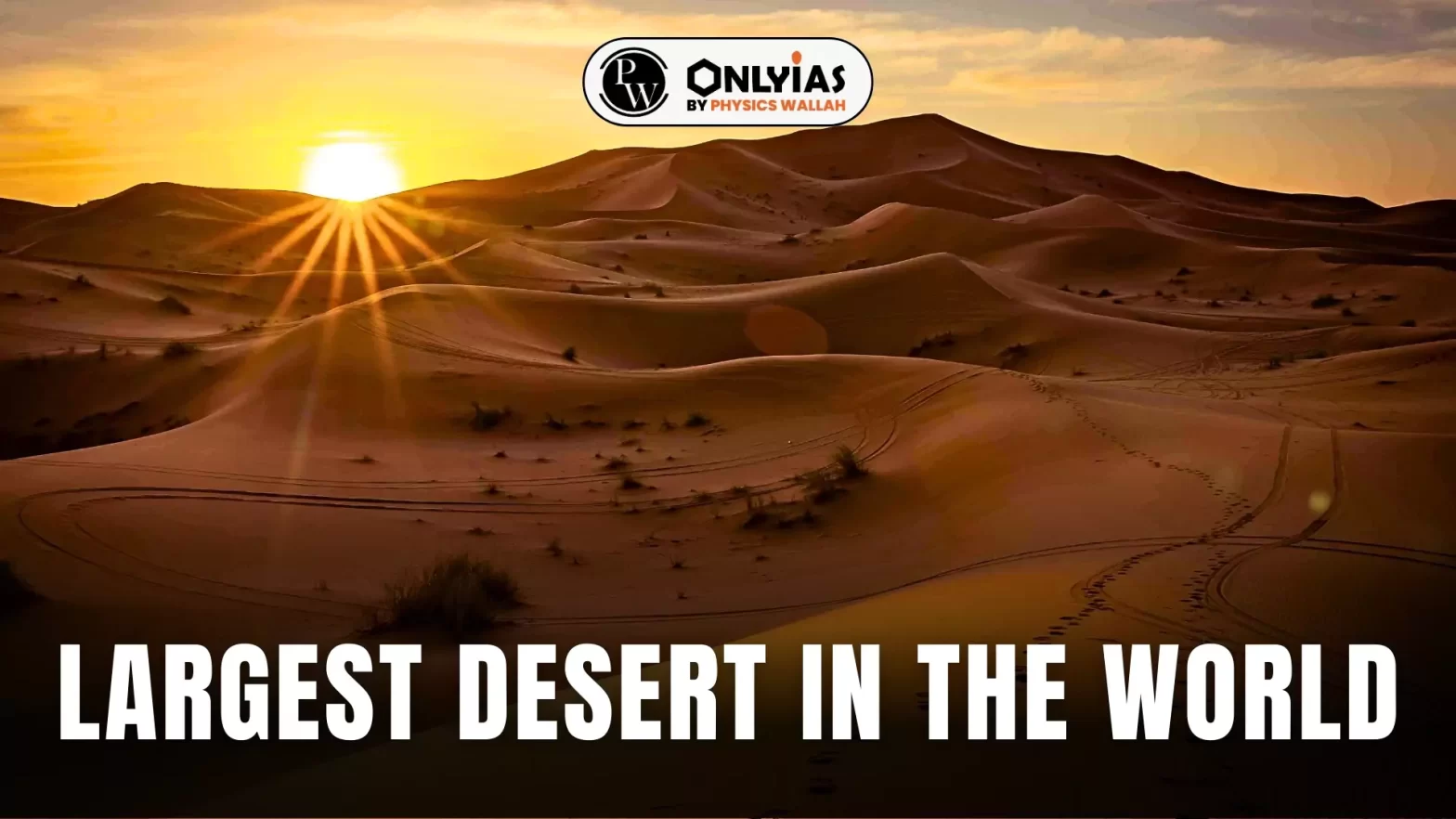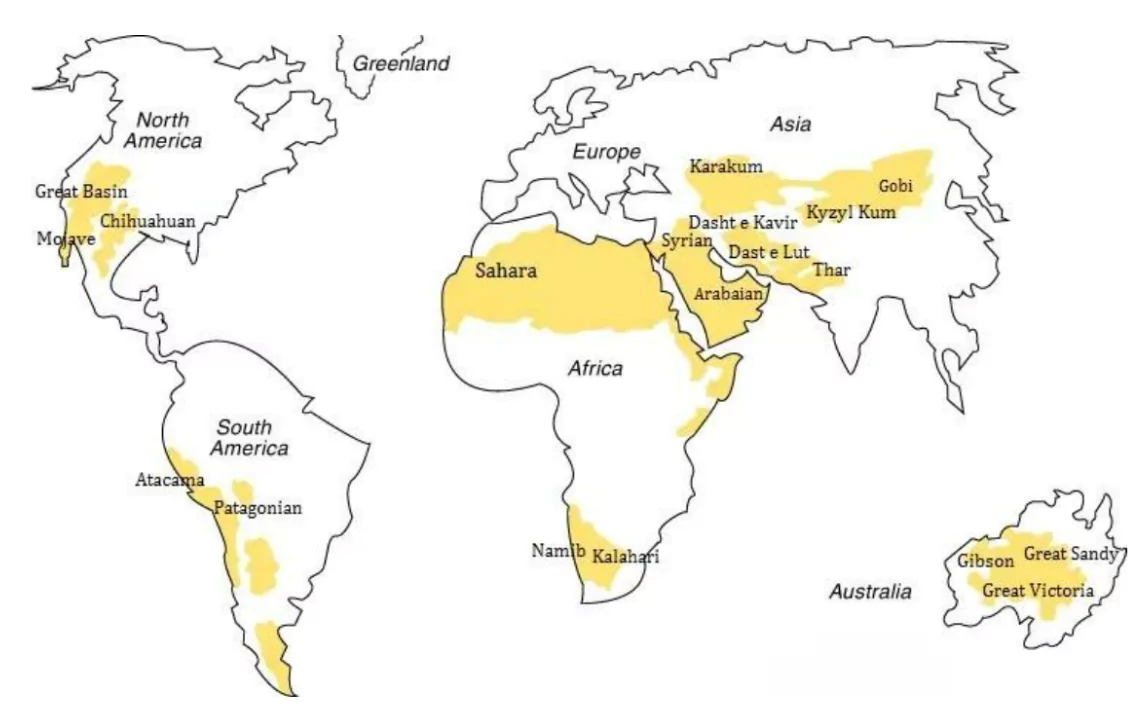![]() PWOnlyIAS
PWOnlyIAS
![]() March 26, 2024 04:20
March 26, 2024 04:20
![]() 639
639
![]() 0
0
Learn about the Largest Desert in the World, their locations, and formation processes.

Deserts form an important topic for government exams, including UPSC CSE. Knowing factual and conceptual information could play an important role in solving questions based on deserts or its related aspects.
The Antarctic Desert, which is the Largest Desert in the World, has been in the news for all the wrong reasons. The rapid expansion of deserts across the world, including in India, is making study of deserts an important feature of climate change studies.
The expansion of deserts has sometimes been natural but anthropogenic activities have had an impact on its growth. For understanding the desert and its magnitude, it is imperative to know about its geographical features.
Desert is a geographical area that is barren and receives little or no rainfall. An area which receives less than 250mm of precipitation is termed as a desert.
The Antarctic Desert, which is located at the south pole, is the largest desert in the world with 5.5 million square miles. The Arctic desert, which is spread across the countries of Finland, Canada, Norway, Sweden, Greenland, and Russia in the North Pole, is the 2nd Largest Desert in the World .

Formation of a desert is a long-drawn process that takes place over centuries. From a tropical forest to a desert, an area undergoes changes due to geographical conditions. Some of the conditions for formation of deserts are as follows:
Deserts are unique geographical formations that are found in most parts of the world. There are multiple types of deserts, depending on their location, rainfall and climate. Some of the deserts are as follows:
Deserts cover more than one-fifth of the Earth’s land area, and they are found on every continent on Earth. The list of the top 10 largest deserts in the world is as follows:
| Desert Name | Location | Area (in Million Square Miles) |
| Antarctic | Antarctica | 5.5 |
| Arctic | Canada, USA, Russia, Greenland, Norway, Sweden, Finland, Iceland | 5.4 |
| Sahara | Egypt, Libya, Sudan, Algeria, Tunisia, Morocco, Mauritania, Niger, Chad, Mali, Western Sahara | 3.5 |
| Arabian | Saudi Arabia, Yemen, Oman, UAE, Qatar, Jordan Iraq, Kuwait | 1 |
| Gobi | China and Mongolia | 0.5 |
| Patagonian | Argentina and Chile | 0.26 |
| Great Victoria | Australia | 0.25 |
| Kalahari | Namibia, Botswana and South Africa | 0.22 |
| Great Basin | USA | 0.19 |
| Syrian | Syria, Saudi Arabia, Jordan and Iraq | 0.19 |
India is a subtropical country that receives adequate rainfall. But there are some regions in the country that have turned into deserts. Some of the deserts in India include:
Deserts are important areas of biodiversity, despite having very little resources for plants and animals to survive. They have been important spots of archaeological discovery, indicating its importance since prehistoric times.
Study of deserts will likely yield evidence of climate change on the planet. It will help humans to modify their approach to prevent desertification in future.
| Must Read | |
| NCERT Notes For UPSC | UPSC Daily Current Affairs |
| UPSC Blogs | UPSC Daily Editorials |
| Daily Current Affairs Quiz | Daily Main Answer Writing |
| UPSC Mains Previous Year Papers | UPSC Test Series 2024 |
<div class="new-fform">
</div>

Latest Comments